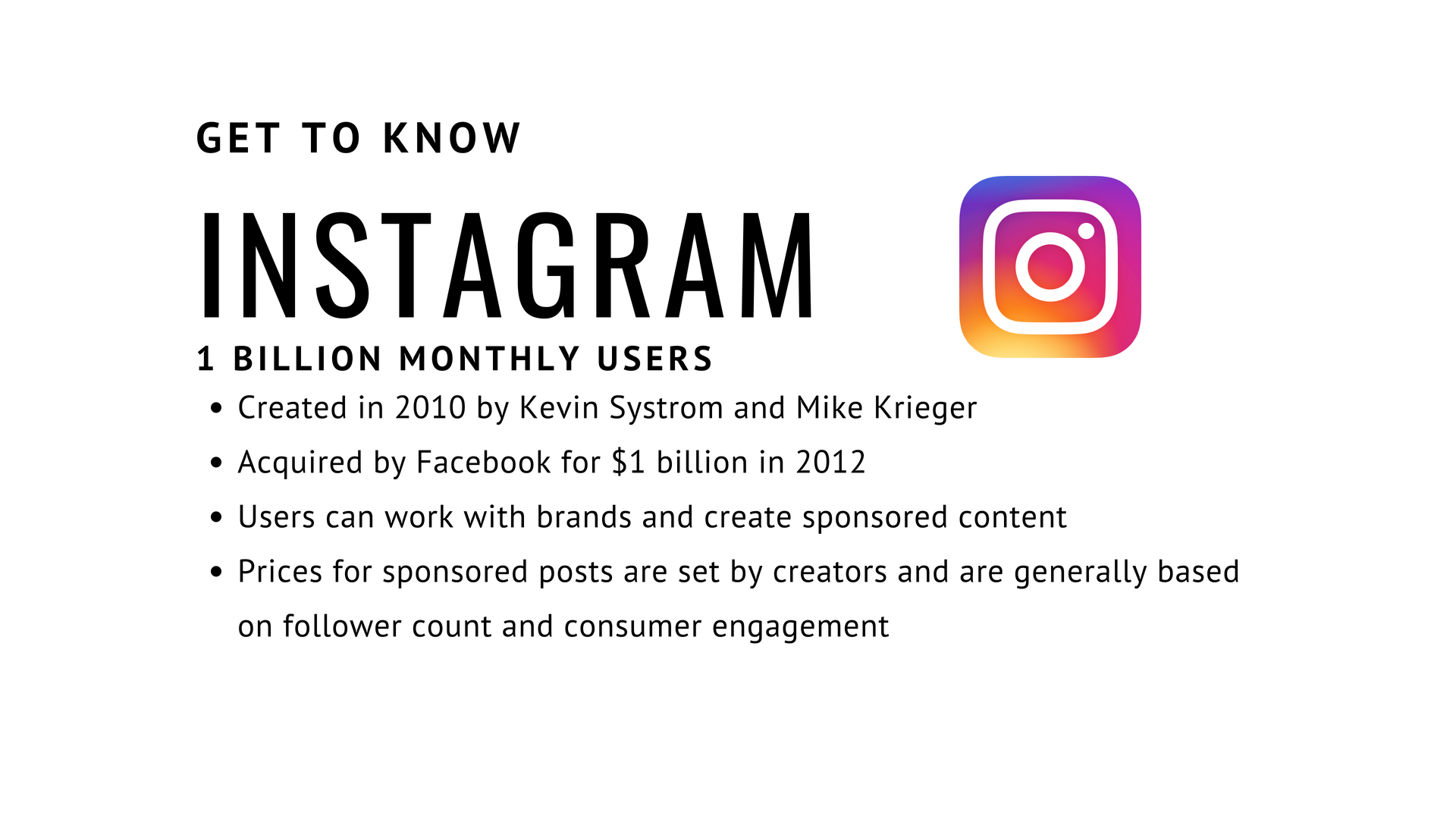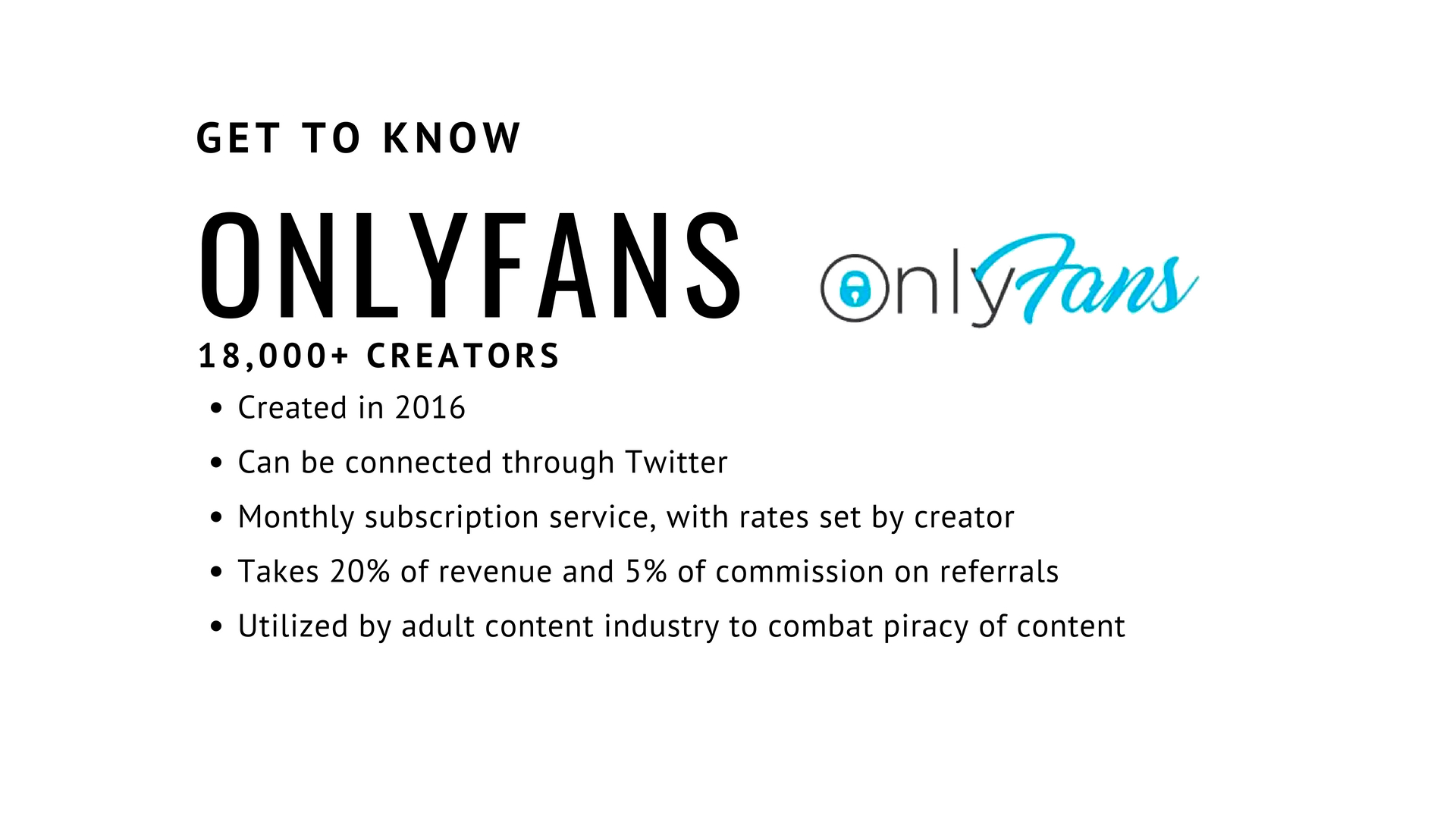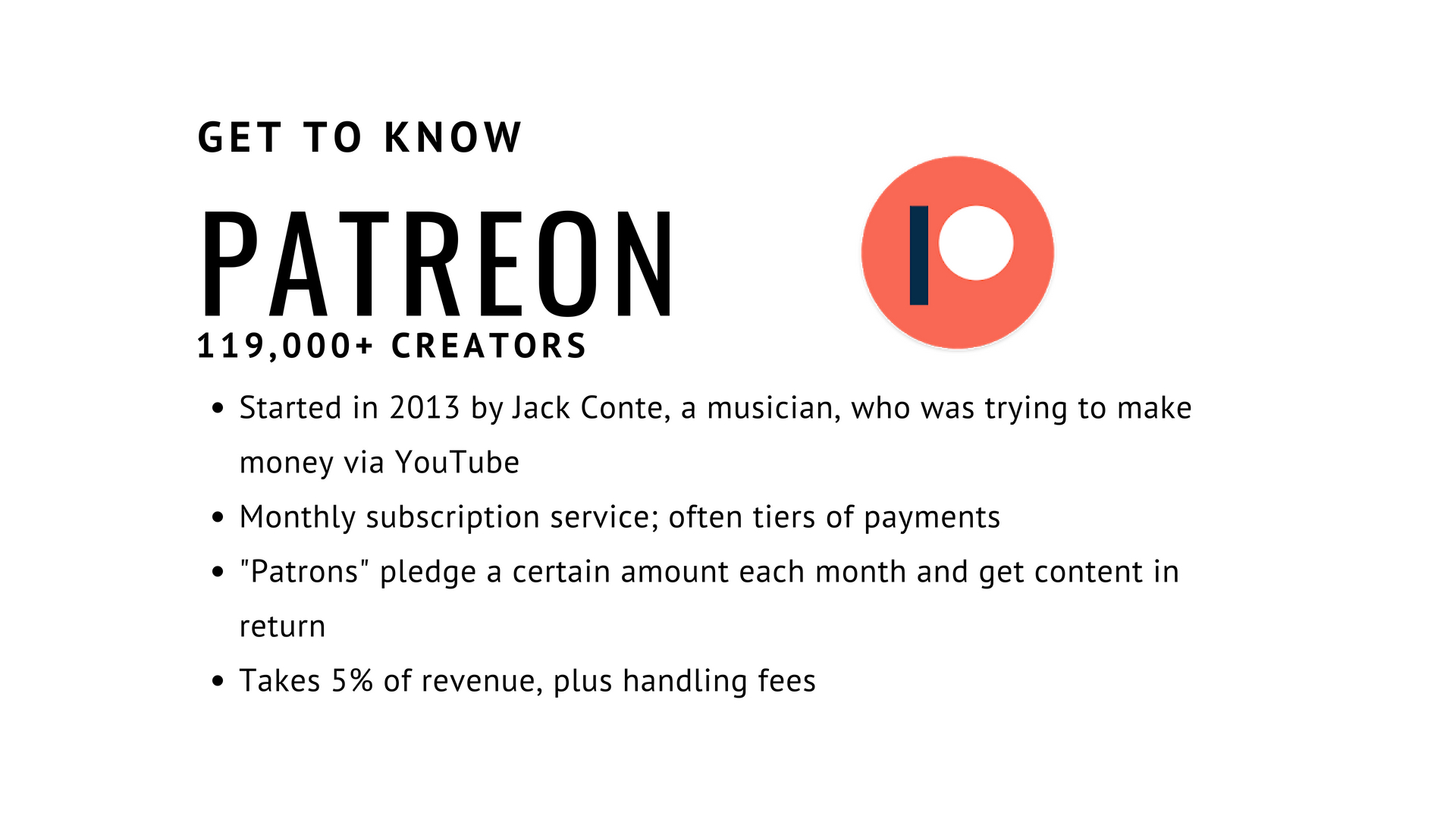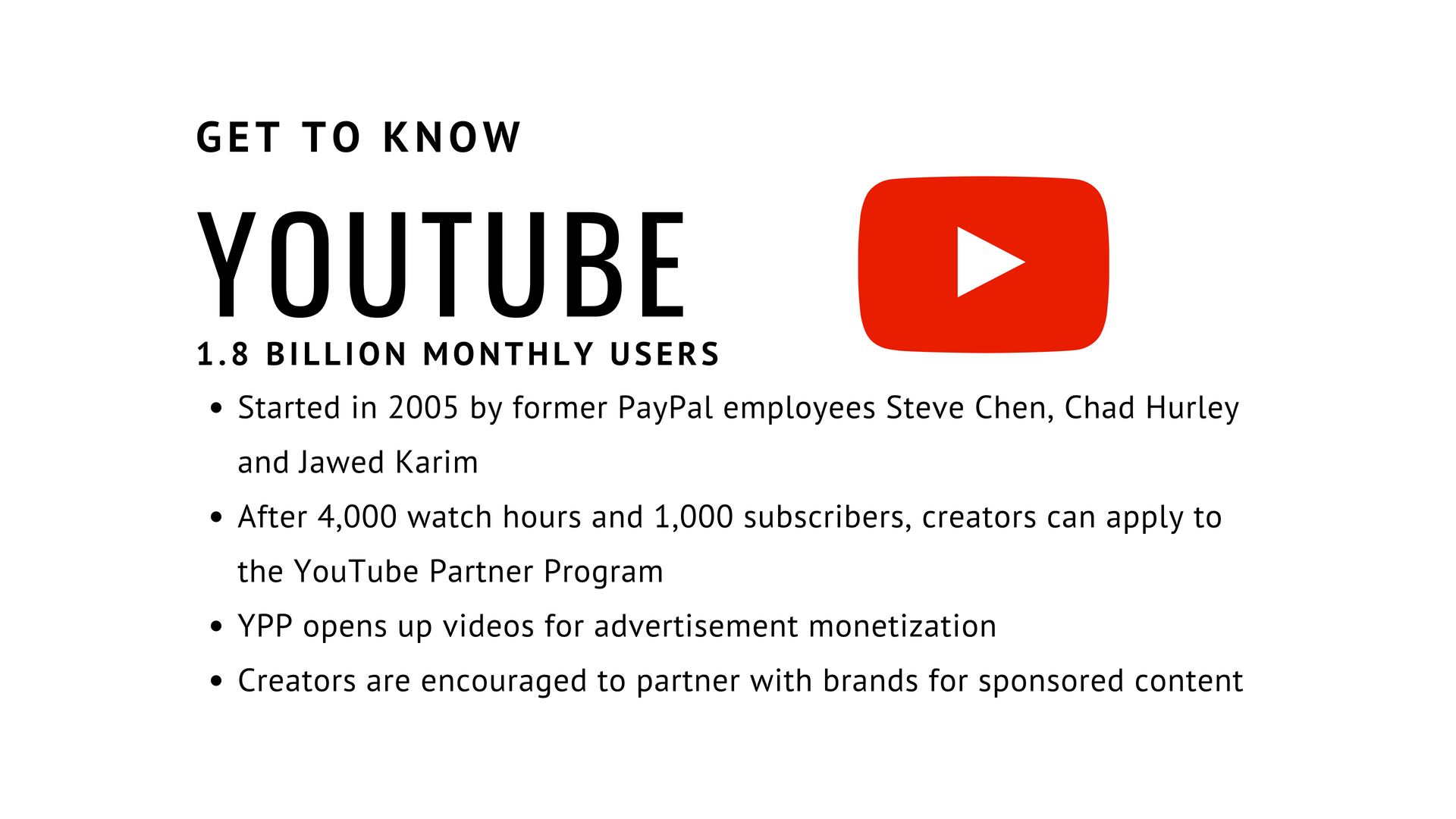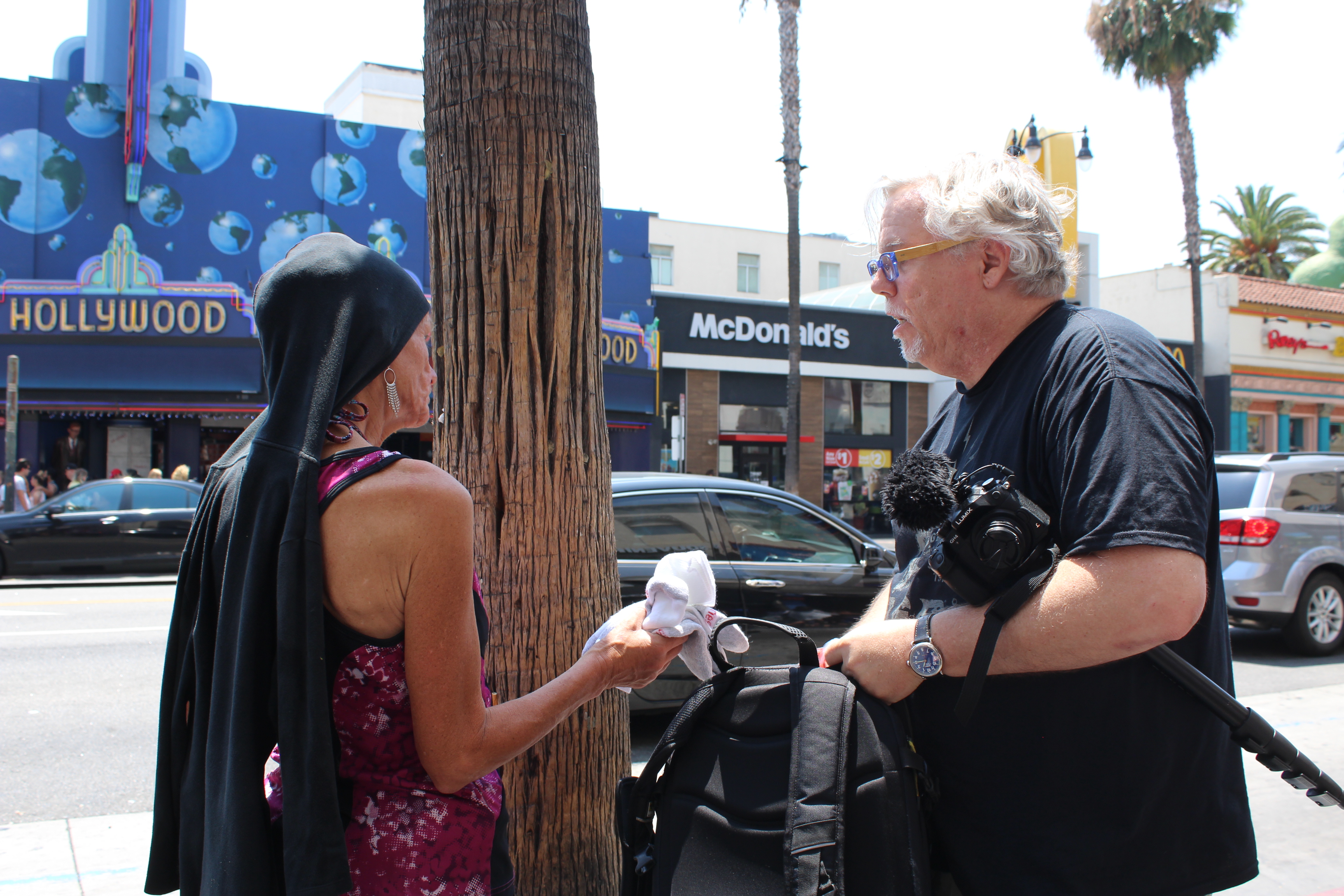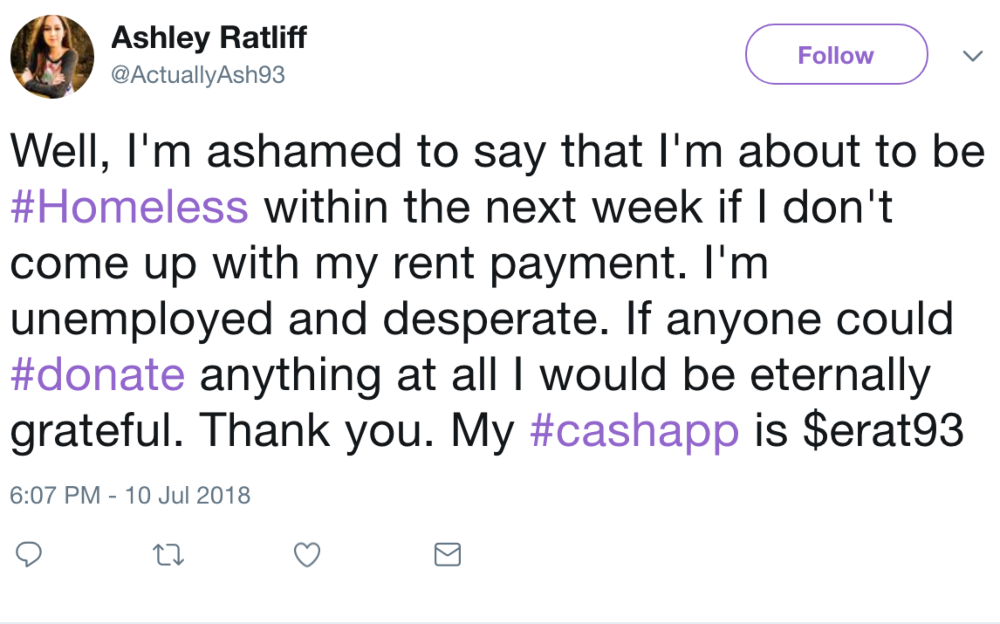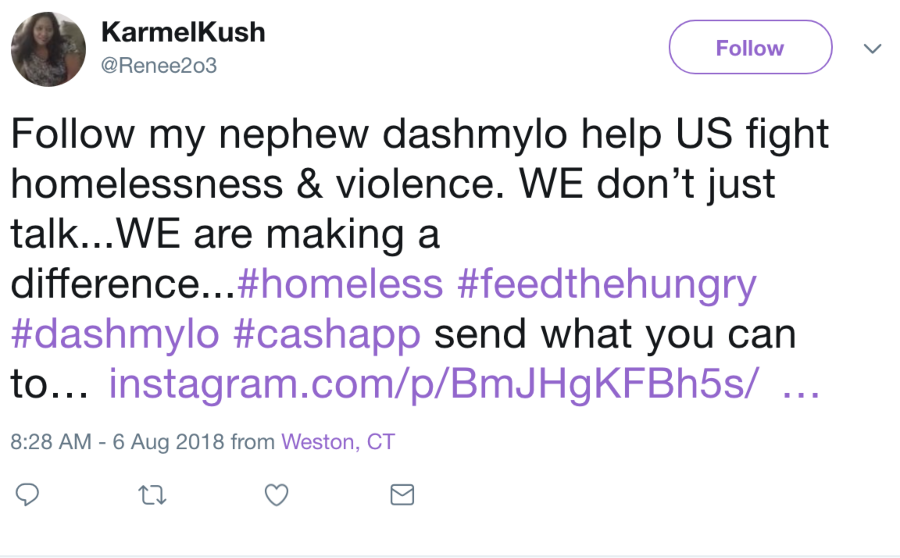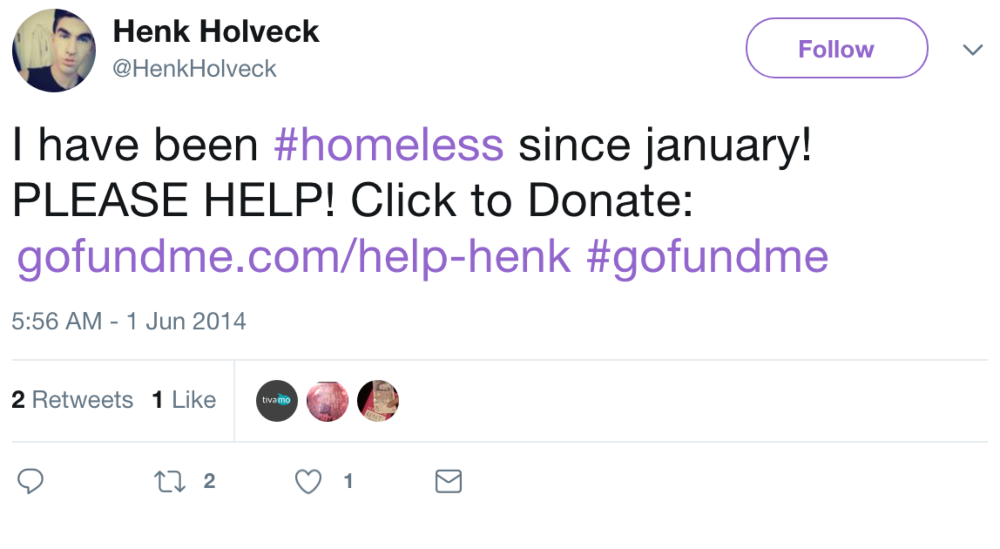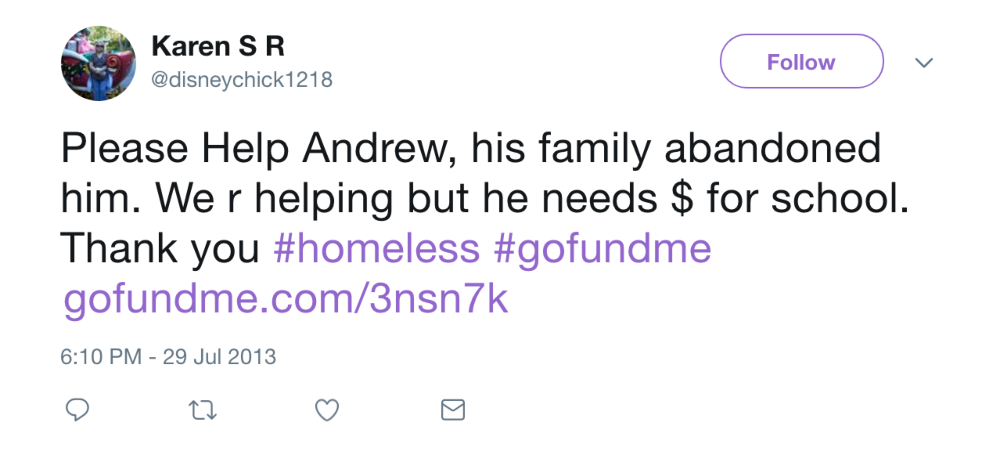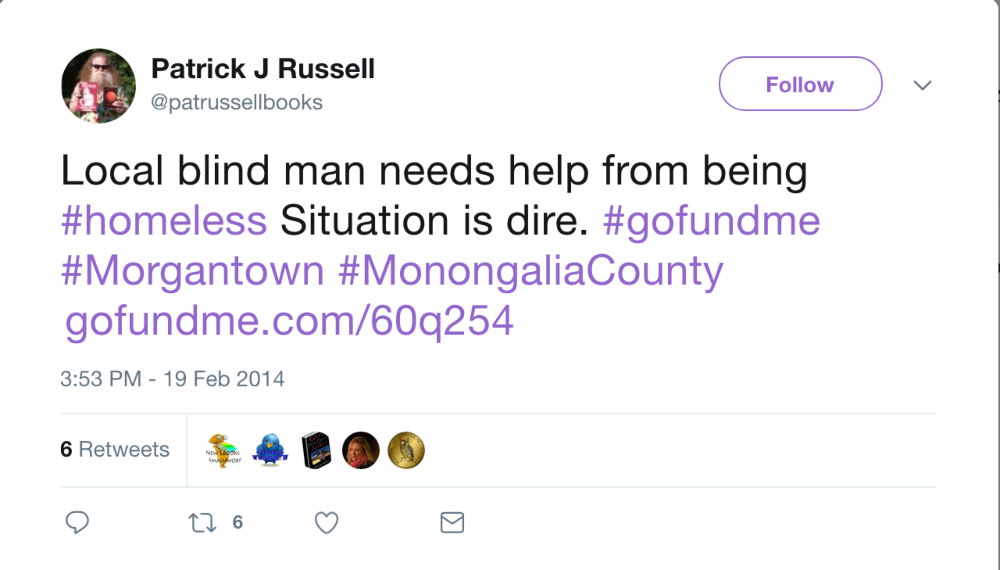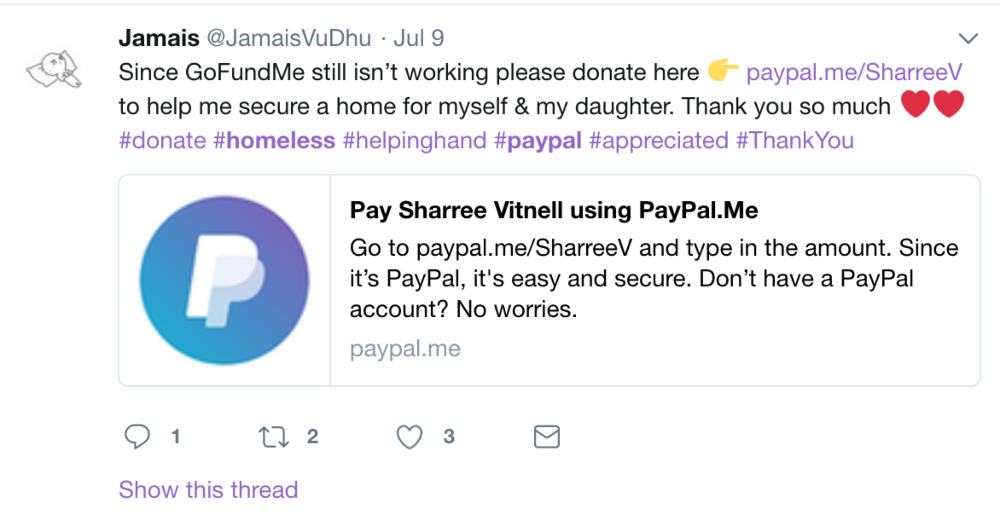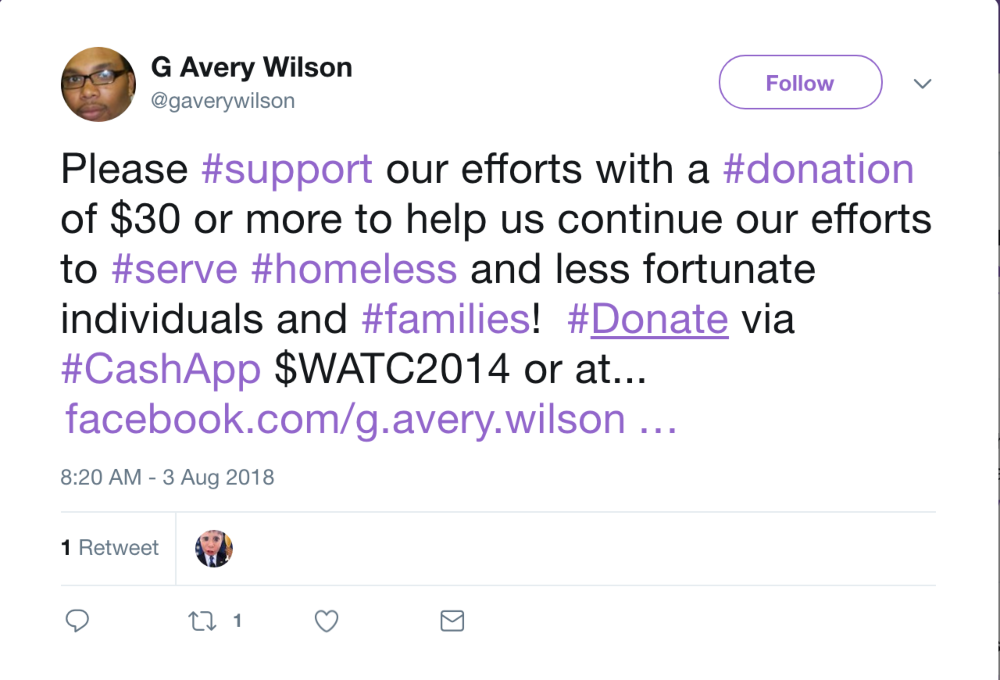Their fans call them creators. Marketers know them as influencers. A layperson may describe them simply as social media celebrities. Whether they're giving makeup tutorials on YouTube or unboxing purchases on Instagram, they have become a dominant force in pop culture, often rivaling the impact and reach of traditional media stars.
And some of them, are homeless.
Kameron Lester, better known as Kam to his friends and fans, is the epitome of the up-and-coming YouTube star. At 6 feet, 2 inches, the 21-year-old is decidedly tall, with a shock of tight blonde curls. He is rarely seen without a touch of lipstick and mascara, often complemented with bright fuchsia eyeshadow. Lester regularly features makeup tutorials on his YouTube channel, which he broadly describes as having a "lifestyle" focus. To Lester, that means, "anything that has to do with my life, or anything that has to do with beauty." And for a time, that meant coping with homelessness.
Lester is one of the many online personalities striving to make their place among the leading entertainers, trainers, cultural voices and opinion leaders of our time. These paradigms of the Millennial dream are looked on with admiration and envy by young people around the world. With over 30,000 followers, Lester has long since broken the threshold for what are sometimes described as "micro-influencers," or creators with small, but loyal followings.
The comments sections of his videos are filled with the praise. Adoring followers have seen him through his darkest hours — such as when he was diagnosed HIV positive — offering both emotional and monetary support to their online inspiration.
In fact, it's these most troubling experiences that have won him his most loyal followers. Lester has built his brand on discussing taboo topics and revealing the less glamorous side of his life.
Like many others, Lester and two of his friends moved to Los Angeles in 2017 to pursue their dreams of becoming YouTube stars. "We had these big plans to grow and focus on social media out here," recalls Lester. "Two of us were from Texas. We all met through social media."
He became homeless in early 2018 after one of his roommates fell behind on rent payments. The three had overextended themselves on a three bedroom, three bath West Hollywood apartment costing more than $4,000 per month.
"We were all on one lease, so it just came crumbling down really fast," recalls Lester.
Although Lester was initially nervous about sharing his ordeal on YouTube, his fears proved unfounded. He received outpourings of support from his followers, including offers of couches to sleep on and other aid to keep him off the street. There were hundreds of sympathetic and encouraging messages in the comments of his videos. Many people Lester knew in the offline world reached out and offered support after learning about his situation online.
As one fan comment reads: "Hey Kam! I'm praying for you my brother, I know exactly what your going through. I'm also in Cali and homeless[.] I mean really homeless and I have a little girl. It's really hard!!! I actually broke down crying in the rain. Idk what I gonna do but I'm a strong believer in GOD! so I stay praying. God bless you my brother."
Lester, who contracted HIV at 20, has also spoken openly about the struggles he faced in telling his father, managing emotional distress, and dealing with HIV-related medical concerns. His most watched video, with nearly a million views, is one of many discussing HIV-related experiences. Lester's decision to share such intimate information online was more of an intuitive decision than an intentionally provocative social statement.
"It just felt right, honestly. When I post, I just post for me. Sometimes I feel like my camera, my YouTube is like a journal," says Lester. "Even though it might look like it's been the worst year for me, I've learned so much, I've jumped so many hurdles and just got right back up. I like to share that. People think social media is all glamorous, but I like to show good and bad on my channel."
Lester's unapologetic focus on the things that matter to him and his fans mirror the defining features of a successful creator, according to Jeetendr Sehdev, a celebrity branding expert and author of "The Kim Kardashian Principle."
"They have to be true to who they are," Sehdev describes on a call from a speaking tour in Europe. "They have to be rainmakers, pioneers, rule-breakers and change-makers; people who are pushing the boundaries and showing people things that they haven't seen before... people bringing something fresh, something new, and even something extreme."
One fan recognized Lester from YouTube and approached him at a cookout at the Los Angeles LGBT Center to say he had been homeless, too. The fan "came from NYC, was sleeping on the sidewalks," Lester recalls.
The meeting gave Lester a new appreciation for the relationship he has with his mother, who has been a source of emotional support throughout Lester's life. "He didn't have any family, I had a family. That fan really showed me that it could be a lot worse."
Lester's impact on others is part of his appeal—and is typical of his generation.
A recent study by the U.K. Royal Society for Public Health found that nearly seven in 10 teens reported receiving support on social media during challenging times. Researchers describe young people's ability to freely express themselves and explore different aspects of their self-identity as important parts of their developmental health. These youth's social media communities provide key outlets for self-expression and emotional support. "With many young people having hundreds or even thousands of 'friends' on social media there is a vast network of potential support available should it be needed," write the researchers.
These social communities are often the only outlet people feel they can turn to when facing stigmatizing issues like sexually transmitted diseases and homelessness. According to researchers, they can help drive away feelings of isolation for people whose life circumstances would otherwise prevent them from expressing themselves in the offline world.
Often, people find others undergoing similar struggles in places they would never imagine.
"I heard from another creator, Instagrammer, she said she was homeless," Lester recalls. "Never thought that because she has millions of followers. Didn't have a place, credit was bad, now she's huge and doing it."
Get to know Kameron Lester
Experiencing homelessness and being newly diagnosed with HIV, Kameron Lester, channeled his hardships through YouTube garnering a bevy of support from near and far.
If the video does not load, click here
Hollywood Dreams and Realities
Van Oladeji grew up in front of a television screen. His favorite movie was "The Dark Knight," where he was entranced by Heath Ledger's performance as the Joker. A huge Denzel Washington fan, today he looks more like a young Chris Rock. His no-frills style — almost exclusively T-shirts, gym shorts and backwards baseball caps — is a far cry from red carpet attire.
Oladeji is a 24-year-old veteran, originally from Cleveland, Ohio. After a year and a half of Army service in Hawaii, he came to Los Angeles to pursue a career in acting. He didn't have much of a plan for his path to stardom, preferring instead to figure it out as he went.
Like many who come hoping to make it big in Hollywood, Oladeji fell on hard times shortly after arrival. He spent his first two months sleeping in his car, reading plays at the Samuel French Theatre and Film Bookshop on Hollywood's Sunset Boulevard. His self-study was interspersed with fruitless attempts to land roles in University of Southern California student films. When Oladeji could no longer make his car payments, the aspiring actor ended up on the street.
One night, while sleeping on the L.A. Metro, his phone was stolen. Oladeji eventually met another formerly homeless veteran who took him to the Weingart Center. The non-profit shelter, located in L.A.'s Skid Row, gave him a place to stay while he tried to get his life back on track.
It was here that Oladeji's life-changing encounters with social media began.
After seeing another YouTuber react to dance videos, Oladeji decided to post his own reactions to the site. His reasoning at the time was simple. "I was like, 'oh this looks pretty fun,' so I just tried it out."
Oladeji worked for months, posting constantly under his online name, "Van Wilder." His videos featured commentary on everything from music videos to dance performances, to other YouTube personalities' work. Over time, Oladeji built a small but loyal following — without ever letting on that he was homeless.
"I think I only told maybe one subscriber and one YouTuber I talked to that I was homeless the whole time... I was super nervous telling people," he recalls.
Oladeji waited until he had 6,000 subscribers, just passing the upper limits of micro-influencer status, to tell his fans about his struggle with homelessness.
The outpouring of support was immediate and overwhelming. Oladeji received hundreds of comments praising his dedication to his YouTube aspirations and thanking him for making fans smile, even as he was going through such hard times. Some surprised him with comments about their similar struggles and encouraged him to continue until he achieved his goals.
"I was ecstatic. I was happy. I almost cried," recalls Oladeji.
Just as his YouTube career was picking up steam, Oladeji's next big break came through another unexpected social media contact—a woman he met on Tinder who loaned him $1,000.
"I took that $1,000 and I invested it in some cryptocurrencies. The one cryptocurrency made me a good amount of money," says Oladeji. With the nearly $4,000 he netted from his investments, Oladeji underwent training, became a security guard and got an apartment. He also bought new video and computer equipment for his burgeoning YouTube career.
Today, Oladeji works a day-job as a security guard at Children's Hospital Los Angeles and, after months of delay, he is expecting to receive his first check from YouTube in September.
"You have to hit a certain threshold. It's like 1,000 subscribers and 4,000 watch hours. So I've been waiting. I've had [it] since February so it's just been taking forever," says Oladeji.
Lester was able to receive relatively timely and consistent YouTube payouts throughout his homeless period. His success was due, in part, to the community of followers he had already built before he lost his apartment. In the year and half since starting his YouTube account, Lester had long since cracked YouTube's monetization threshold of subscribers and watch hours — an industry term for the amount of time people spend watching a channel's videos, rather than simply opening them. This provided a regular flow of funds, which ranged from $300-$700 per month when Lester arrived in Los Angeles, and grew to more than $1,000 per month as he began posting about his struggles with HIV and homelessness.
Lester solicited more direct assistance through a GoFundMe campaign — an online donations platform with lower fees and a greater focus on charity than Patreon and OnlyFans — and posted a video asking his fans for help. He was able to raise nearly $1,600 over the course of one month. That was enough to cover the cost of a rent deposit, ending his six month struggle with homelessness.
Today Lester takes in approximately $1,200-$1,300 per month from YouTube ad revenue, supplemented with a growing business in sponsorships from brands such as Purlisse skin care. The payments cover all of his essentials, such as rent, groceries, transportation, and other bills.
Looking back, Lester is immensely grateful for the support he received and the ability he now has to properly tend to his health.
"It's a luxury, mental health, everything ... I'm very grateful for everyone who helped me."
Neither Oladeji nor Lester use Patreon or OnlyFans — platforms popular with other social media personalities, often promoted through an influencer's main YouTube or Instagram account. These patronage platforms allow tiered subscriptions to premium content for a monthly fee, with incremental bonuses such as behind-the-scenes videos and shoutouts on the influencer's main social media posts. The platforms are particularly popular for creators with an entertainment or educational focus such as comedians, artists, and fitness instructors. OnlyFans even allows adult content creators to share pornographic material.

